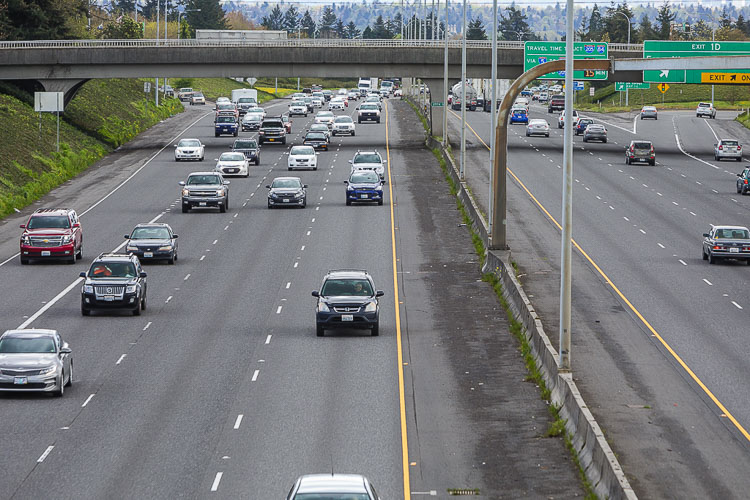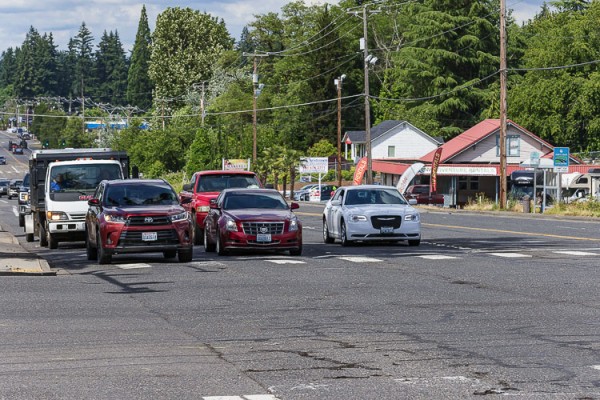Clark County Today Editor Ken Vance offers his thoughts on efforts by Vancouver officials to develop the city’s long-term 20-year vision for its transportation system
You might have seen our story Thursday from the city of Vancouver about the upcoming City Council workshop on June 14 during which members will get an update from staff on the development of the city’s long-term 20-year vision for the city’s entire transportation system.

The city’s comprehensive transportation system planning project “examines travel conditions for all users of the city’s transportation system, including those who drive, walk, bicycle, use mobility aids, ride transit or deliver freight.’’

The news release from the city stated “at the workshop, city staff will establish how the updated Transportation System Plan will reflect the council’s core values of equity, safety, sustainability and climate action.’’ You see, as is usually the case, that’s exactly where government leaders and elected officials lose my support and trust. Issues as important as transportation should be established from a baseline of the citizens’ core values, not those of the council members and the staff.
Once updated, the Transportation System Plan will create a transportation vision in the city for 2040. It’s supposed to reflect the community’s values and needs but recent actions of Vancouver’s staff and elected officials don’t reflect my values and needs or those of virtually anyone I know. Here are examples that support my belief:
• Vancouver officials have consistently made the decision to not expand the city’s Urban Growth Boundary and add land for development. Their actions indicate they want “high density’’ housing, which ultimately raises the cost of housing and the demand for services.
• Vancouver leaders appear to be pushing for transit-oriented development, which is the “green’’ thing to do, but in reality, it makes for more traffic congestion for people who want to use their cars.
• The city has already reduced the number of parking spots required for many new apartment complexes, creating another issue for people with cars.
• The city has been pushing to eliminate parking spots in the downtown area in favor of bike lanes. This hurts area businesses rather than helping them attract customers.
Throughout the many discussions in recent years about transportation congestion issues in Clark County and the surrounding areas, I believe a majority of citizens have made it clear. They want to keep their cars and they want to have the ability to use them to get to where they need to go.
A recently completed survey of area residents supports my claim, as shared in this previous Clark County Today story. As previously reported, an overwhelming majority (84 percent) of respondents said that prior to the COVID-19 pandemic, they regularly drove alone. Twenty one percent rode bicycles and 27 percent rode public transit.

A 2018 survey by PEMCO of Oregon and Washington drivers indicated 94 percent of respondents preferred their cars. In 2012, a Metro survey indicated 84 percent of Portland-area drivers preferred using their cars.
Like it or not, it’s pretty clear the core values of the majority of citizens includes the preference to use our own vehicles for transportation, both locally or regionally. Therefore, members of the Vancouver City Council and city staff should not be progressing with plans to further their own core values over ours.
Remember, the reality is that over 70,000 Clark County residents work in Oregon. In 2018, 73,240 Clark County residents paid $236 million in Oregon income taxes according to the Oregon Treasurer. It would seem logical to me to assume the majority of those people are Vancouver residents. Therefore the members of the Vancouver City Council should respond to the needs of their citizens who’s major concern is time lost in traffic congestion, while going to and from work in Oregon.
The city should be pushing the Southwest Washington Regional Transportation Council to begin planning for at least one, if not two, new transportation corridors across the Columbia River.
In support of my claim, consider that a 1980 Bi-State Study forecast 185,000 cross-river daily trips in 2000, as shared in this previous Clark County Today report. A 1988 study showed I-205 traffic had already exceeded the 200 forecast. WSDOT reports over 300,000 daily crossings were taking place prior to the pandemic. That 1988 study also discussed the benefits of two new bridge crossings, one west of I-5 and one east of I-205.
The 1988 study concluded the following: “A crossing west of I-5 would provide some traffic relief to I-5 and would provide direct access to the growth centers of Washington County and the port activities in Rivergate and Vancouver.” It also addressed an additional eastside transportation corridor.
How to get involved?
Project staff anticipates the updated plan will be completed by the end of 2022. The city claims that throughout this process, the city will offer a variety of opportunities for the community to get involved, provide input and help shape the plan.
Those interested can learn more about the Transportation System Plan update, stay up to date on the project, and find out how to get involved by visiting www.beheardvancouver.org/VancouverMoves. Community members can watch the June 14 workshop live or on demand at www.cvtv.org. Council workshops and meetings continue to be held remotely.




